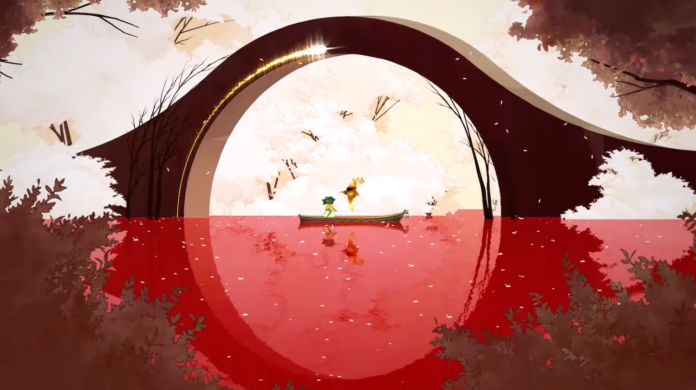Top image: Spiritfarer. Read on to find out why it’s here.
Derek Lieu is a master at making game trailers. He has made some truly outstanding little two-minute movies that introduces a game and its mechanics, teases the story and the characters, and makes players excited for its upcoming release. So, when he gives advice on how to make the most of your two-minute screen time, you might want to pay attention.
If you’re really confused about what shots to put into your game trailer, and in what order, just keep them in the game’s chronological order and then cut out the boring bits.
No, seriously.
I consider this a completely viable way to create a game trailer’s structure. Especially for beginner editors, it has so many advantages:
- Logical
- Takes advantage of the game’s designed progression
- Easier for less experienced editors
Video editing is very intimidating because there are infinite possibilities and you can put the shots in any order you want. If you’re an inexperienced editor, don’t worry about any of that stuff. I’d say 90% or more of editing is just making sure things make logical sense, and the rest is for making people go “WHOA!”
No rhyme or reason
What I see in a lot of trailers by inexperienced editors is the cutting is too random with little to no rhyme or reason for the shot selection. Random editing says: “We just put a bunch of shots together and we’re not going to help you understand the game.” This will cause the audience to disengage because they’re not getting what they need. Seemingly random cutting should be reserved for the end of the trailer after the audience has a firm grasp of the game, and wants to end with a variety of cool stuff.
This is why chronological order is a great place to start. It makes logical sense to the viewer, and will build up in intensity (if the game is designed to do so). Take a look at the trailer for Papers, Please.
This is a great trailer which starts off with the basics of the game and gradually gets more and more complicated. Just like how the game itself starts off with the basics and ramps things up as you play. This is what I mean when I say chronological order is logical and uses the game’s designed progression.
Fundamentals of gameplay
Every game tends to start by introducing the player to the fundamentals of the gameplay, adding twists on that gameplay, and then repeating that cycle. This is something Mark Brown discusses in this video about Super Mario 3D World’s 4-Step Level Design.
Most games also tend to have a greater sense of progression throughout the entire game. Think about how Super Mario games start with idyllic levels full of greens and bright colors, and end up in darker worlds full of fire and spikey traps. Or in games like Elden Ring which start in grassy environments, and gradually progress to dark and sickly environments with giant skeletons, poison swaps, and other very unwelcoming looking places.
Visual sense of progression
This visual sense of progression is already built into the game, so why not just use it for the trailer? You generally want the trailer to start with fundamentals, ramp up the complexity, and show the breadth of the game’s variety in a way which feels like there’s a sense of progression. Most games do that already, you just need to keep everything in order, and skip around enough for it to not get boring.
This trailer for Unpacking is mostly in chronological order. It starts with the first room in the game, moves onto the second, and onto another one from later in the game. At the end of the trailer it goes back to the second room to show it almost completely unpacked, then ends on the first room after it’s finished. The skips through the progression keeps things fresh, and ending on a finished room completes the game loop so we can see what success looks like.
Some other trailers which are chronological are: Inbento, Spiritfarer – Gwen Trailer, and Astroneer.
Boring bits
So what are the ‘boring bits’ I mention you should cut out? It’s sort of subjective, but I think as long as you show the first verbs the player performs in the order they experience them in the game, that’s a good start. For example, think of a game like Legend of Zelda where you’re an adventurer who: walks around, gets a sword, kills monsters, collects money, buys items, gains new power ups, enters dungeons, fights a boss. That’s the basic progression of things you do in the game.
You wouldn’t want to start the trailer by showing them walking around, then purchasing items, walking around some more, then fighting a giant boss. This isn’t the order you experience things in the game, so this makes no sense. It would tell the viewer that buying stuff is probably the primary thing you do as the player, not fighting monsters. You generally want to maintain the integrity of the core game loop, and repeat that as the trailer progresses.
Thorough capture
So, if you’re pretty new to trailer editing (or even if you’re a veteran) start by doing a thorough capture of the game. Keep everything in order, establish the basic loop, and then show how things get more interesting, and end on a variety of images. You can make a nice trailer even if everything is in totally chronological order. You can always muck around after that, but using that as a baseline is a great place to start!

